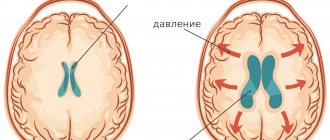The problem is not new. Gogol published his Dead Souls in 1842. And somewhere since then, the shadow of old man Plyushkin has been wandering around the world, who dragged into the house everything that came to hand, and if he had to throw away some rubbish, he experienced almost physical suffering.
It is unknown how many Plyushkins there were in the middle of the 19th century. But now there are so many of them that the surname has become the name of a popular neurological syndrome.
Perhaps this pathology is already developing in you or your loved ones. Check it out.
Where does Plyushkin syndrome come from?
Plyushkin is still a Russian hero. In English-language sources, the same neurological disorder is designated differently - Messi syndrome (from the English mess - disorder) or Hoarding: The Basics (from the English to hoard - accumulate). Regardless of the name, we are talking about the same thing - pathological hoarding.
At the initial stage, the disorder is practically no different from a completely understandable love of creative disorder or a reluctance to part with things dear to the heart.
In the first case, the desktop is littered with necessary and unnecessary papers, unwashed cups and, say, apple cores. Well, what did you want? This is a creative process, there is no time to be distracted by cleaning!
In the second, things no longer fit on the shelves of the closets, but the hand does not rise to throw them away, because this book was given by your first lover, but in that blouse you went to the sea for the first time...
But for some people, over time and age, all this transforms into obsessive behavior - hording.
What exactly causes this transformation, scientists do not yet fully understand. It is only known that hording is often associated with other mental disorders: loneliness and depression, increased anxiety, attention deficit hyperactivity disorder (ADHD), obsessive-compulsive disorder (obsessive thoughts).
The Psychology Behind Hoarding also associates the development of Plyushkin syndrome with the following factors:
- Age . Chording is most often observed in people over 50 years of age. However, deeper research shows that the passion for hoarding began to manifest itself in them already at the age of 11–15.
- Personality type . Plyushkin syndrome affects people with severe indecisiveness.
- Heredity . Psychologists are not entirely sure about this factor, but still note some genetic predisposition to the development of pathology. If one of your close relatives has a cluttered house, you are at a higher risk of following in their footsteps than others.
- Psychological trauma . Many Plyushkins experienced a traumatic event in the past, the consequences of which were not overcome with the help of psychotherapy.
- Social isolation . Most often, people suffering from loneliness and lack of social recognition become khorders. They try to find solace in things.
Beyond acceptable limits
Shopping mania is a fairly common disorder. The largest number of shopaholics live in America. There are approximately 15 million of them here. Another 55 million are about to cross the line and end up on the same side.
In England, the number of shopaholics is 700 thousand people. More than 50% of English women admitted that shopping gives them more pleasure than sex.
Over the past 10 years in Russia, the number of oniomaniacs has increased by 30%. Currently, up to 7% of Russians suffer from the disorder.
Scientists have found that such a pastime as shopping causes a number of processes. It is thanks to them that shopping is so captivating for addicted people:
- The very act of spending money and purchasing a new product causes a surge in the neurotransmitter serotonin. The latter is nicknamed the hormone of happiness, because it gives rise to a feeling of pleasure and helps relieve negative emotions;
- shopping is a powerful distraction. That is, display cases with numerous products allow you to forget for a while about the problems and difficulties that exist in life.
Based on the listed properties of shopping, we can identify the first cause of oniomania. This is stress, no matter for what reason, as well as an anxious, depressive state.
Other reasons include:
- feeling of loneliness, dissatisfaction;
- lack of attention;
- Among women, the main cause of the disorder is the breakdown of relationships with a partner. In this case, shopping mania replaces the need for love thanks to the same serotonin;
- thirst for recognition. Some shopaholics go to stores not for the sake of purchasing this or that item. They pursue another goal: to feel the helpfulness and ingratiation of sellers. Hear praise and compliments;
- pronounced shopaholics seek a surge of adrenaline to experience a feeling of euphoria. Such people visit particularly “dangerous” places. Usually these are discount days, when crowds pour into the store and maniacs organize real massacres for goods.
Advertising plays a special role in the formation of the disorder. It is one of the ways to manipulate human consciousness. The best strategists, image makers, designers, and psychologists work in the advertising field. Their task is to present the product in such a way that a person becomes eager to purchase it. Therefore, advertising can rightfully be considered one of the causes of oniomania.
You should learn to perceive a commercial only as a source of information, but not as an instruction to action.
What does Plyushkin syndrome lead to?
There are very clear criteria that allow us to say unequivocally: “Stop, this is no longer a passion for creative disorder and not collecting things dear to the heart. This is a pathology."
American researchers have created the scale THE 5 HOARDING LEVELS AND GUIDELINES FOR RECOGNIZING THE DISORDER, which allows you to assess the seriousness of the problem.
I level
There is some chaos, but not excessive. Access to doors and stairs is free, movement is quite easy, and there are no unpleasant odors. In general, the home looks slightly cluttered, but neat.
Level II
The trash cans are overflowing. Part of the space - 1-2 rooms - is littered with things, it is difficult to move there. Mold is growing in the kitchen and bathroom. All horizontal surfaces are so cluttered that they cannot be used. Access to one of the exits from the house is blocked by a landfill.
Level III
At least one of the rooms is uninhabitable: it is impossible to move in it. Other rooms are in disarray, dusty and dirty, and smell bad. The corridors and passages are cluttered. In case of fire or smoke, a person will not be able to escape.
IV level
There is so much trash and dirt that using the bathroom and bedroom is almost impossible from the point of view of an outsider. There is noticeable mold on the walls and floor. There are problems with clogged drains and electrical wiring.
Level V
Housing looks more like a landfill. There is practically no free space - everything is crammed with things and garbage. They are infested with cockroaches, rats and other vermin. There is no electricity or water, the sewage system does not work: either the wires are broken or the pipes are clogged.
The situation threatens not only the Horder, but also his neighbors in the apartment building. They have to endure stench, pests and the constant threat of flood or fire.
Of course, completely advanced cases are rare. However, they are quite possible if you do not stop in time.
What it is
Oniomania is a widespread form of addictive, that is, dependent, behavior. From Greek the term is literally translated as onios - “for sale” and mania - “madness”. Among the people, the concept is known to almost every person under the name “shopaholism.”
Currently, there is debate among experts on the topic: “Is shopaholism a disease?” In fact, officially such a disease does not exist. It is not listed in the International Classification of Diseases. This gives grounds for some scientists to classify shopping addiction as a fashion trend or consider it a sign of weakness, the same as, for example, when a person cannot overcome a craving for sweets.
But studies have confirmed that at the biochemical level in the body, with oniomania, the same changes occur as with any addiction: drugs, alcohol, gambling. Consequently, such a bad habit as shopaholism is rightfully considered one of the forms of addictive behavior. This is a real mental disorder with all the ensuing negative consequences, which only a professional can cure.
The history of shopaholism as a separate disease began in the 19th century. Then the first symptoms of the disorder were described by the famous German psychiatrist Emil Kraepelin together with his Swiss colleague Eugen Bleuler.
One of the famous shopaholics is Barbara Zelinski, who in 1956 announced the main tenets of a true shopper:
- whoever gets up early will visit more shops;
- not buying the right thing will harm your health;
- We won’t stand behind the price.
Barbara is called the founder of shopping. She set a world record: a woman managed to spend her husband’s salary in 1 minute 55 seconds. The husband, unable to bear the “hobby” of his beloved, eventually divorced her.
How to recognize Plyushkin syndrome at an early stage
Plyushkin syndrome must be corrected as soon as 2-3 of the following symptoms appear:
- Difficulty with cleaning . Creative clutter extends not only to the desktop, but also to other surfaces. Clothes, books, papers, equipment are simply dumped indiscriminately into chairs or cabinets.
- Reluctance to throw away unusable items . A sweater with holes is okay, it will come in handy at the dacha. A full-filled weekly journal for the year before last - what if I ever need to review it and remember something important?! A broken chair is okay, I'll fix it one day. A TV that cannot be repaired - let it stand, it may contain expensive spare parts!
- Too careful attitude towards insignificant things . For example, to a scattering of pebbles brought by children or grandchildren from the sea. Or a dozen children's blouses. Or an old souvenir like a dove with a broken wing. Above all this, the beginning horder languishes, like Gollum from “The Lord of the Rings,” not wanting to part with and not allowing his family to throw away things that have obviously served their purpose and are no longer needed.
- Neglect of hygiene, cleaning, changing linen . In general, this is predictable: when there is too much trash, putting things in order turns into a Herculean task.
- Self-isolation . The person demonstrates a distrustful and hostile attitude towards people, including loved ones, and the world around him, and strives for loneliness.
Wrong parenting model
The character of a shopaholic is filled with undesirable traits. Among them -
- poor resistance to stress;
- inadequate self-esteem;
- increased suggestibility;
- egocentrism;
- hypertrophied anxiety;
- hypersensitivity;
- reduced adaptive capacity;
- emotional imbalance.
These personality traits are formed under the influence of improper upbringing . Two of its models are fatal.
The first involves raising a child like a family idol. They pamper him and buy him everything he wants. Usually such children, and then adults, are capricious, selfish, and emotionally unstable. Shopaholics of this kind have been spoiled by attention since childhood. Having no special abilities, they attract attention to themselves by ostentatiously spending money. They buy expensive but useless goods. Their spending is thoughtless, they easily spend all their money.
The second model of education is like Cinderella. These are children of authoritarian parents, who have been accustomed to a harsh, strict attitude since childhood. They lack love, attention, affection, care, recognition. “Cinderellas” feel abandoned, useless to anyone. In childhood, such people were subject to excessive demands. They were taught to strictly adhere to the rules without the possibility of departure, and Spartan education was used.
Through multiple purchases, Cinderella oniomaniacs try to compensate for the lack of parental love and, possibly, material wealth. If no one loves them, then they probably love themselves and will buy anything for themselves, their loved ones. If “Cinderellas” are trying to make up for what they were deprived of in childhood, then such individuals do not choose nonsense, but acquire more practical things.
Star shopaholics include Victoria Beckham and Sarah Jessica Parker. Victoria can spend up to 150 thousand dollars in 1 day. Once the star purchased glasses worth 25 thousand dollars, and then lamented that she had made an absolutely useless purchase. But her main passion is Hermes bags. She has about a hundred of them.
Sarah Jessica Parker, like her character in the TV series Sex and the City, loves shoes. Her arsenal includes both very expensive models and cheap ones, costing $100. In total, the star has about a hundred pairs of all kinds of shoes and boots. Sarah admits that she can't pass by a pair of shoes she likes.
Operation Motivation
The need to clean the house can be motivated by the concern that the “collection” is kept in order (“otherwise it will be inconvenient to look at it”). It is important to convey to the person the idea that he needs to keep his room clean, even if victims of Diogenes syndrome have a unique concept of order.
It is also important to try to show interest in the “treasures” of your loved one and communicate with him at least once a week about his “hobbies”. And it is imperative to show how important and interesting this person and what he does to his family are. You need to remain a loving relative, ready to help, so that a person with such a problem can be confident in his future.
Of course, this is not easy, especially since patients with Diogenes syndrome often strive for isolation, treat others with great prejudice, and sometimes are simply aggressive. But you need to try to establish contact with them. Moreover, such “home psychotherapy” often gives positive results.
If the disease has gone far, it is better to be treated in a psychiatric clinic. Although a patient can be placed there only with his consent or by declaring him incompetent, that is, by a court decision. And according to doctors, at least half of patients with this disease are quite healthy, and they do not require compulsory medical care. After all, such behavior is still regarded as a lifestyle.
Manifestations of the disease
You can notice a pathological hoarder from afar - this is a sloppy appearance, unwashed hair and the obligatory storage of unnecessary things. After the first complaints from the neighbors, it becomes clear that Diogenes is ill, because the unexpected rats and cockroaches will not take long to appear.
In some cases, when opening an apartment, you can see cabinets and shelves filled with junk, overflowing with things and household items. Boards and old boxes, food, things from the trash bin - all this is brought in for further use.
People living in their own homes often create shelters for stray animals, causing disputes with neighbors. American scientists have created a five-point scale for assessing pathology, there are several criteria: appearance, litteriness of the room and the ability to take care of oneself.
Patients are critical of outside attempts to help, withdraw into themselves and stop contacting loved ones. The manifestation of the disease can be triggered by economic problems in the family or the death of a loved one, and as a result, poverty and poverty.
Healing with love
What should the relatives and neighbors of the modern Plyushkins do? After all, they have to endure for years an unpleasant smell, dirt, and sometimes hordes of cockroaches and mice, which naturally feel at home in such apartments. In addition, such a neighborhood can pose a direct danger. After all, for example, if there is a fire in a room full of garbage, it will be impossible to put out the fire; such apartments will burn to the ground.
Ideally, the patient should be consulted by a psychiatrist or at least consult a psychologist. In advanced cases, the doctor may prescribe special medications that stabilize the patient’s condition. With regular use of medications, a state of remission often occurs, and the person returns to a normal lifestyle.
And in the initial stages of the disease, psychiatrists advise trying to come to an agreement with the collector, directing his passion for collecting in a peaceful direction. For example, for starters, you can advise him to collect something specific or at least of the same type. You can get him interested in collecting culinary recipes - then time will be spent on selecting them, sticking them in special albums, as well as watching TV shows on the topic and recording the information received in special notebooks.
Instead of living cats, you can advise the “collector” to collect postcards, stamps, labels and other things with the image of this animal. If a person drags old newspapers and magazines into the house, it will be useful to stipulate in advance that printed materials are selected only on a specific topic. It would be nice to regularly help your relative with cleaning.
Alogia
Many patients with schizophrenia are laconic; they are characterized by low speech productivity, slowness in answering questions, and monosyllabic statements.
Alogy:
- Monosyllabic statements.
- Poverty of speech content.
- Delay in answering a question (“answering after a long pause”).
Traditionally, alogia is described in the structure of negative symptoms of schizophrenia. In our opinion, this rather complex psychopathological phenomenon is partly a consequence of the neurocognitive deficit characteristic of schizophrenia.
Return to Contents









